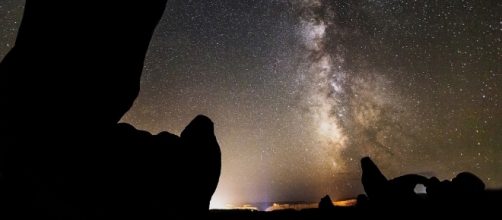Today we are collecting so much scientific data that the Internet’s original purpose is once again becoming important. With hundreds of satellites and telescopes the amount of data overwhelms astrophysics with the data.
What the Internet was for.
Would you like to do real astrophysics without the years of brain sweat and advanced maths usually required? There are actually many volunteer jobs in science which can be done by anyone with a computer. Real science, not just lending computer time to the SETI team listening for BEM's.
Anyone can help reduce the information overload facing astrophysicists by looking at images and helping classify what you see - although it won’t earn you a trip to Stockholm, that’s still real astrophysics.
Although many people don’t realise it the Internet was not primarily developed to share our every random thought on Twitter or tell burglars that we are on vacation for two weeks, or even for free porn. beginning with USENET the Internet was developed to let scientists share information and collaborate on projects without waiting months for publication in peer-reviewed journals or periodic conferences.
Today there are many projects on the Internet where anyone can help winnow the masses of data down to the point where it can be used by astrophysicists. Past Zooniverse projects have ranged from identifying the kind of galaxy shown in an image, to converting handwritten notes to text. In the 19th century science was mostly about amassing data and classification, now that's just the first step.
Planet 9
The latest project run by a group called Zooniverse is to help locate the fabled ninth planet in the Solar system. Around 1900 Percival Lowell predicted that a disturbance in the orbits of Uranus and Neptune was caused by another planet at the outer edge of the solar system. That was at a time when astronomers thought the entire universe consisted of our home galaxy, The Milky Way - today, thanks to Edwin Hubble (the Hubble telescope was named for him) we know it is billions of times larger, meaning much more data in each photograph.
When Pluto was discovered at the Lowell observatory in 1930 by Clyde Tombaugh it was thought to be the Planet X predicted by Lowell and was termed a planet.
More recent discoveries of similar sized bodies led to Pluto being reclassified as a dwarf or minor planet and is not the fabled planet X or ninth planet.
The search goes on - you can help.
Getting astronomical images is easy, almost too easy. After a few minutes training - and I mean literally just a minute or two minutes, you can begin analysing images. Photos are taken of the same part of the sky on different nights and because a planet would move relative to the background stars and galaxies. You look for the change. (The word planet comes from the Greek word meaning wanderer.)
The online images come from the SkyMapper telescope in Australia whichmostly looks for supernovae but has other uses.
How easy is it - where's Waldo?
Here are the actual instructions on the Zooniverse.org site: images taken on different nights are superimposed - each night uses different colours created by filters, e.g. pink, white and yellow strips. What you do is look for any object that is a different colour compared to the background colour - that means it moved.
All you do then is click on the differently coloured planetary objects. That’s it, your results are combined with those of other amateur scientists and the final results go to astrophysicists who examine them more closely.
There- you’ve done real, incredibly useful science. That can be a school project, a group project of an astronomy club, or simply a part-time thing you do on your own.
There are currently 103 thousand objects to classify. 12,800 volunteers are already working on this project and have made 2 million classifications searching for Planet 9. But don’t worry about missing out. There are a lot of stars and minor planets - the job is still classified as less than 1% complete.

